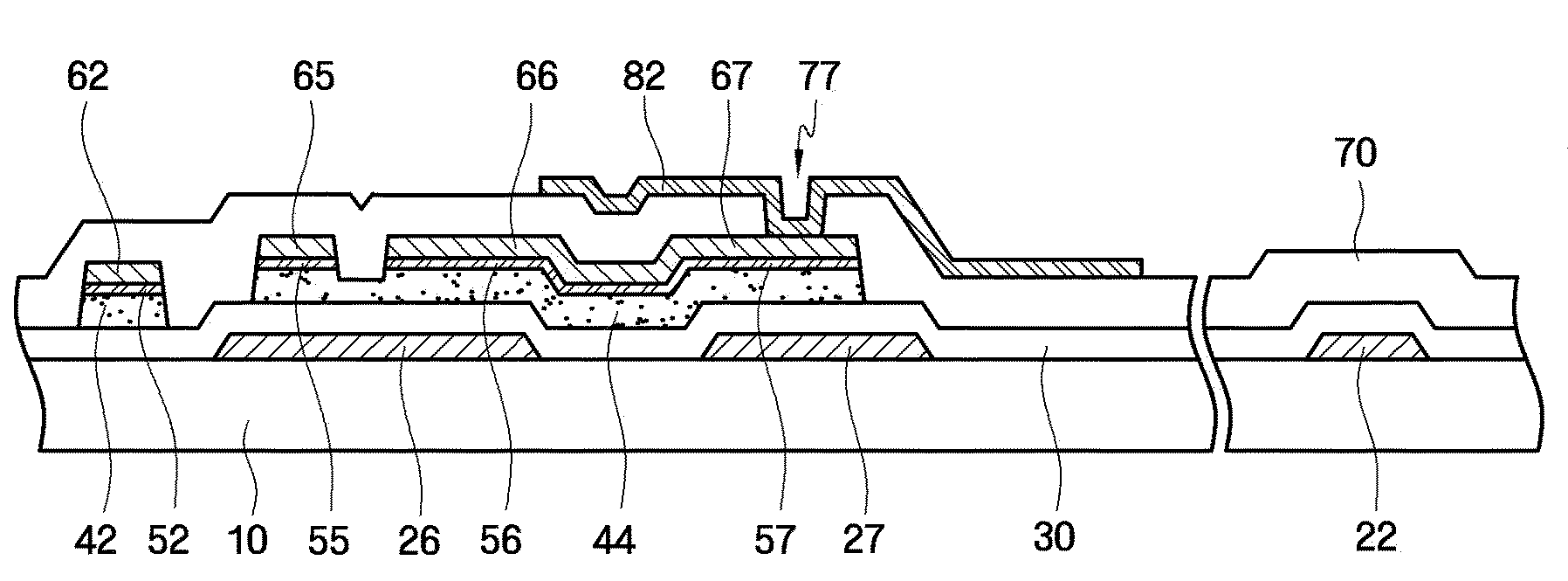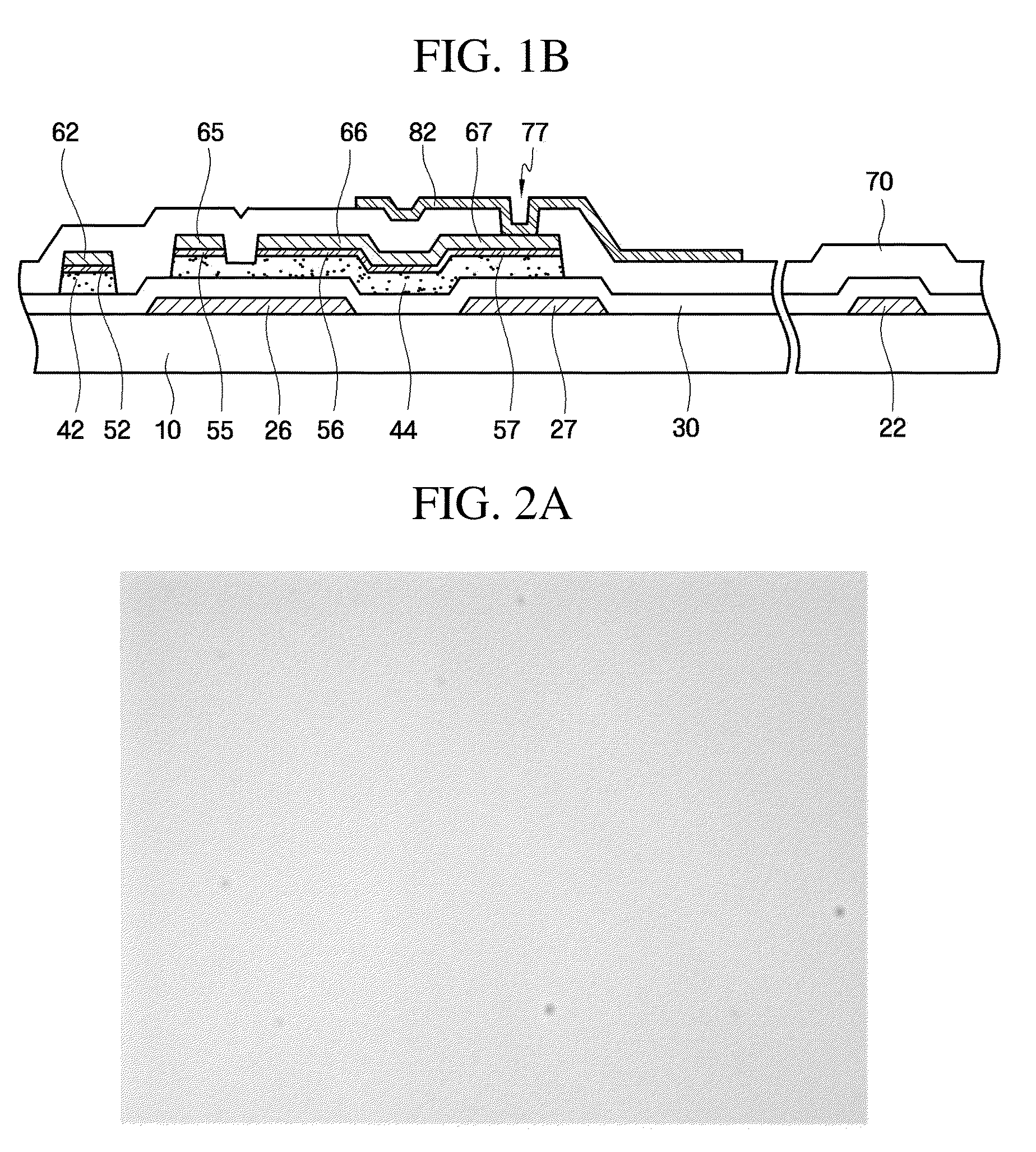Thin-film transistor substrate and method of fabricating the same
a thin film transistor and substrate technology, applied in the field of thin film transistors, can solve the problems of deterioration of tft substrate properties, low charge mobility and on/off current ratio, and low charge mobility of hydrogenated amorphous silicon, so as to reduce appearance defects and improve electrical properties
- Summary
- Abstract
- Description
- Claims
- Application Information
AI Technical Summary
Benefits of technology
Problems solved by technology
Method used
Image
Examples
second embodiment
[0068]Referring to FIGS. 6A through 6C, the oxide of the first material of the oxide active layer patterns 42 and 44 included in the TFT substrate does not react with the second material of the buffer layer patterns 52 and 55 through 57.
[0069]In the TFT substrate according to the second embodiment, gallium indium zinc oxide (GaInZnO), hafnium indium zinc oxide (HfInZnO), or zinc oxide (ZnO) is used for the oxide active layer patterns 42 and 44, molybdenum is used for the buffer layer patterns 52 and 55 through 57, and copper or aluminum is used for the data wiring. Each of FIGS. 6A through 6C illustrates whether the oxide of the first material reacts with the second material when gallium indium zinc oxide (GaInZnO), hafnium indium zinc oxide (HfInZnO), or zinc oxide (ZnO) (respectively) is used as the oxide of the first material and a sufficient amount of molybdenum is used as the second material. In FIGS. 6A through 8C, a molar ratio of gallium to indium to zinc is set to 2:2:1, a...
first embodiment
[0078]Referring to FIG. 11, a conductive layer 60 for forming data wiring is deposited on the buffer layer 50 by, for example, sputtering. Then, the conductive layer 60 is coated with a photoresist layer 110. The conductive layer 60 according to the present embodiment may be identical to the material of the data wiring (not shown) and may contain aluminum or copper. The conductive layer 60 for the data wiring is deposited at a low temperature, i.e., of 80 to 100° C. When the conductive layer 60 is formed at low temperature, the oxide active layer 40 is prevented from reacting with the buffer layer 50. Thus, the first material included in the oxide active layer 40 is not intercalated into the conductive layer 60.
[0079]Referring to FIG. 12, the photoresist layer 110 is exposed to light by using a mask and then developed to form photoresist layer patterns 112 and 114. The photoresist layer pattern 114 is disposed over a channel region of a TFT, that is, disposed in a region between a ...
PUM
 Login to View More
Login to View More Abstract
Description
Claims
Application Information
 Login to View More
Login to View More - R&D
- Intellectual Property
- Life Sciences
- Materials
- Tech Scout
- Unparalleled Data Quality
- Higher Quality Content
- 60% Fewer Hallucinations
Browse by: Latest US Patents, China's latest patents, Technical Efficacy Thesaurus, Application Domain, Technology Topic, Popular Technical Reports.
© 2025 PatSnap. All rights reserved.Legal|Privacy policy|Modern Slavery Act Transparency Statement|Sitemap|About US| Contact US: help@patsnap.com



